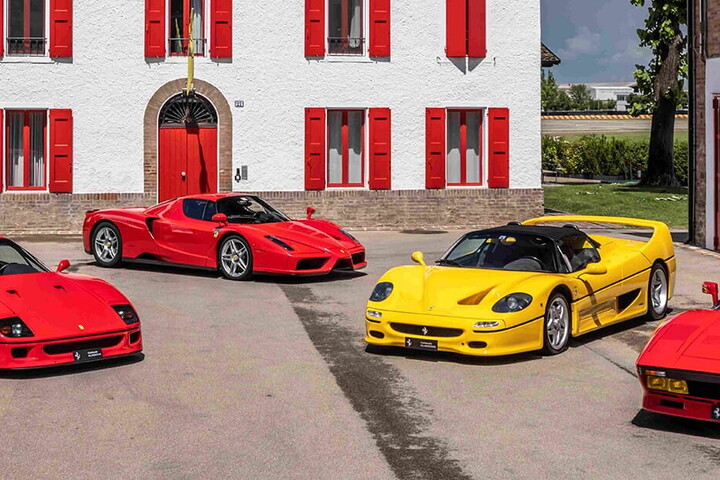It was the only car of its day for which Pirelli made a specific tyre set confirmed by the words “Exclusively designed for 250 GTO” engraved on the inner sidewall of the Stelvio Corsa. Pirelli has been brought the time-honoured tyres back to life to equip the record-breaking car. The values reached whenever one goes up for auction confirm that the Ferrari 250 GTO is not only one-of-a-kind but still one of the most desirable cars in the world. After all, it was created by extraordinary people to dominate the racing scene. It bears the sign of its destiny of staggering numbers and victories already in its name: 250 stands for the cubic centimetres of each cylinder of the three-litre V12 engine, while GTO stands for Gran Turismo Omologata (“type-approved grand tourer”). Interestingly, after production ended in 1964, it would be twenty years before the GTO initials would be used again for the mid-rear-engined car.

Enzo Ferrari and the racing dream
The development of the model was driven by Enzo Ferrari's commitment to finding a successor to the short-wheelbase 250 GT Berlinetta for GT racing. His mind went straight to Pinin Farina. The prototype inspired by the 400 Superamerica proved to be fast in its debut at the 1961 Le Mans 24 Hours but further developments were needed. So, Ferrari called a young engineer from Livorno, Giotto Bizzarrini, who took the Berlinetta introducing concepts that were unheard-of for the day and which proved to be successful. The first bright idea was to shift the entire engine behind the front axle to improve the handling of the car and to create a lower bonnet line that was more aerodynamically efficient.
Then came Forghieri
The development of the prototype put the team to the test. Ferrari was in the workshop every day, pushing and motivating the men who, under Bizzarrini's lead, were constantly at work on the project, with tests being held in the middle of the night and all weather conditions. In September of 1961, the prototype was taken to the track at Monza to move its first steps on the tarmac. The encouraging speed results proved that the car was good but still very much in its infancy. It was December and too late to meet the goal of the next season. Enzo Ferrari had the brainwave to entrust the project to another young man, the 26-year-old Mauro Forghieri from Modena, who would one day lead the Formula 1 Scuderia Ferrari team. At his side, the expert Sergio Scaglietti perfected the bodywork keeping its weight under the 900 kilogram limit and succeeded in transforming many functional requirements into strikingly beautiful details. In development, the Kamm back was fitted with a small rear spoiler, not unlike the one on the mid-engined Ferrari 246 SP. The model was 433 centimetres long, 160 centimetres wide and 121 centimetres high with a wheelbase of 240 centimetres.
The debut at Maranello
The first model, without the spoiler, was presented to the world on 24 February 1962 at Maranello during the pre-season press conference. Ferrari cleverly played with the FIA GT racing rules. At the time, regulations required building at least one hundred examples of a specific model to be granted approval for competition. Drake succeeded in having the 250 GTO classified as a simple 250 GT Berlinetta Short Wheelbase (SWB) with modified bodywork so the production run of the new model could be limited to just 39 units, 36 with a three-litre engine and three with a four-litre engine (often incorrectly called 330 GTO because of the different displacements).
So many wins
It debuted on the track on 24 March, at the 12 Hours of Sebring. The 250 GTO surprised the world by taking second place overall (running against prototypes) but gained even greater fame three months later with its historic result at the 24 Hours of Le Mans when it finished second (with Jean Guichet and Pierre Noblet) and third (with Jean Blaton and Leon Dernier). With its beautiful Ferrari red body and legendary, extremely fast 3-litre V12 engine designed by Gioachino Colombo, it became a cover car. It collected a total of 24 wins in the GT category and three consecutive world titles but the ultimate glory came after 1964 when it left the racing scene to become a true icon of Italian style. Not by chance Pirelli, decided to dedicate the Stelvio Corsa tyres to the car, working on the original designs and adapting the tyres to modern times in 2018. The uniqueness of Pirelli meets the uniqueness of Ferrari.




